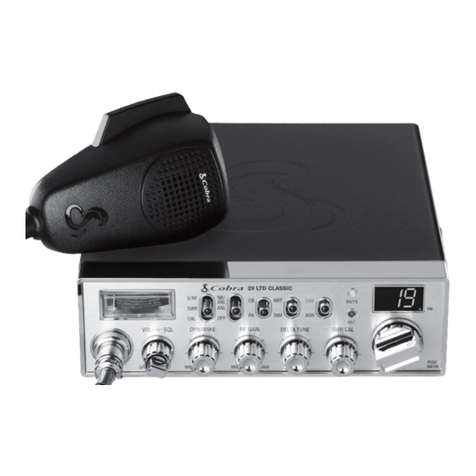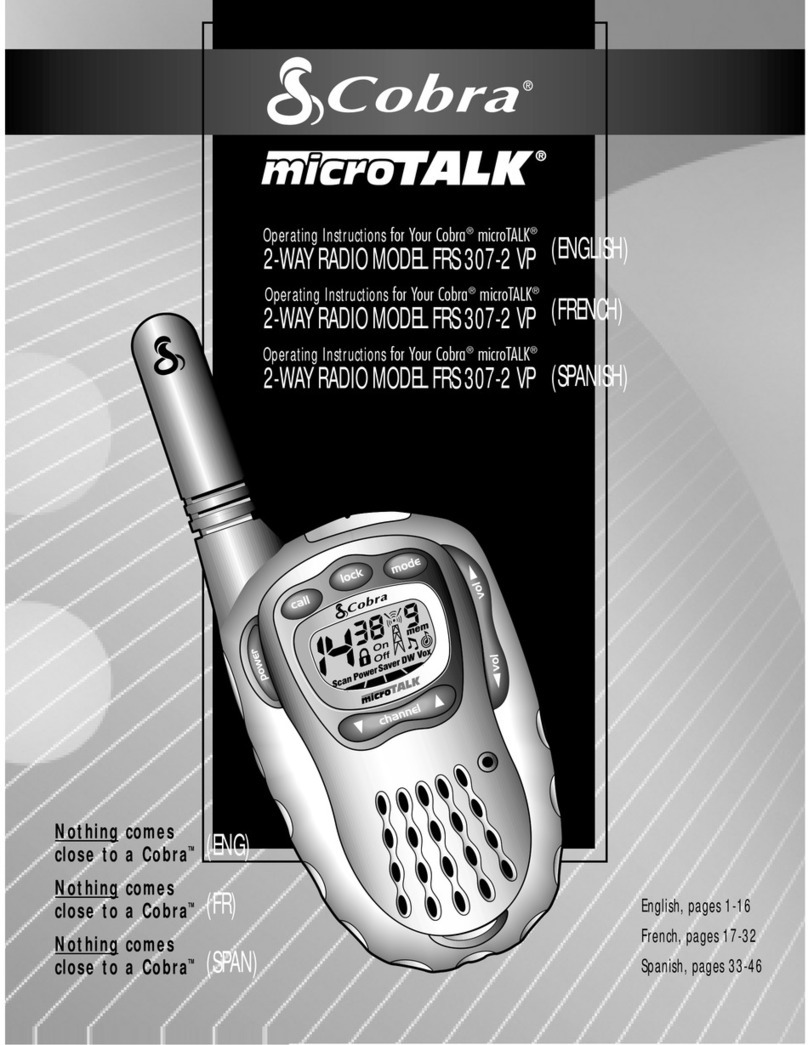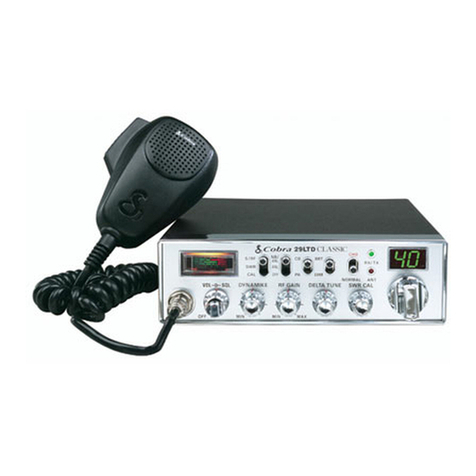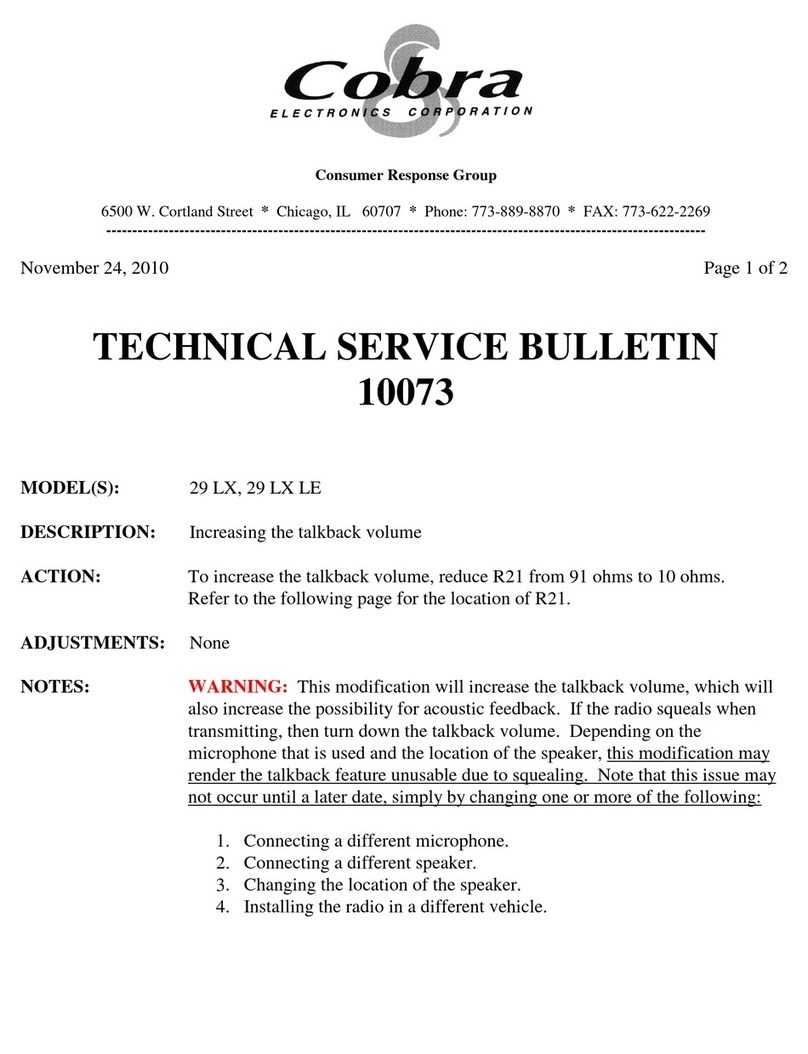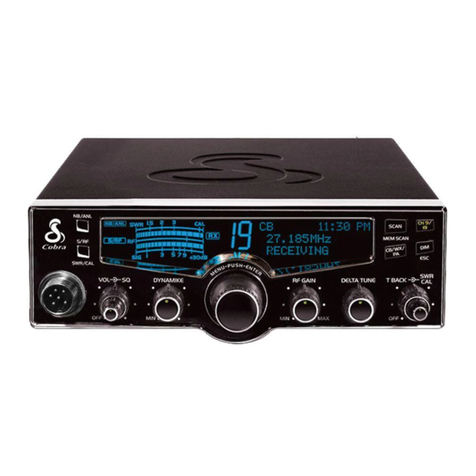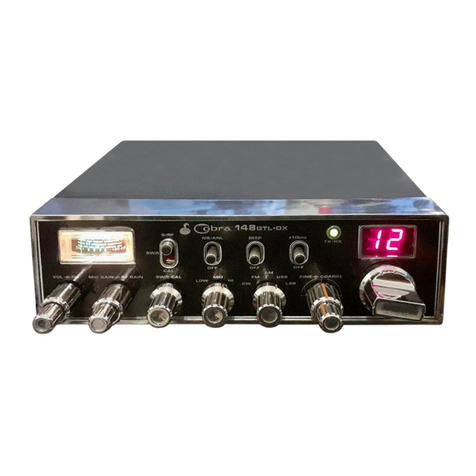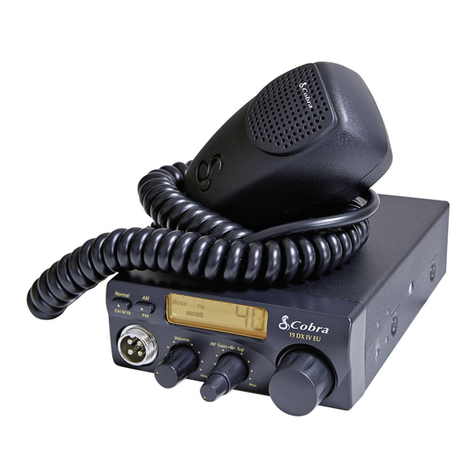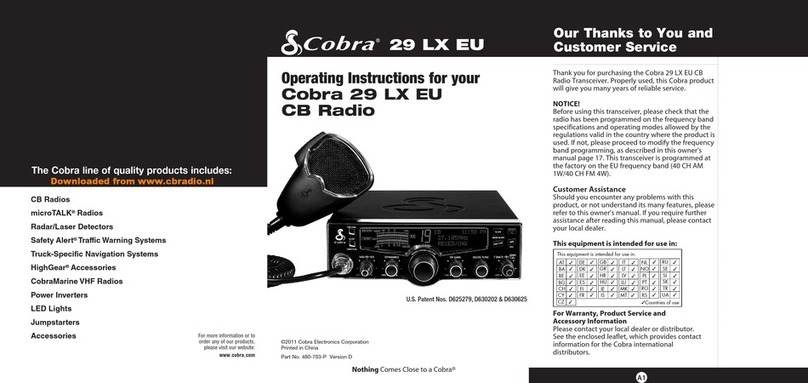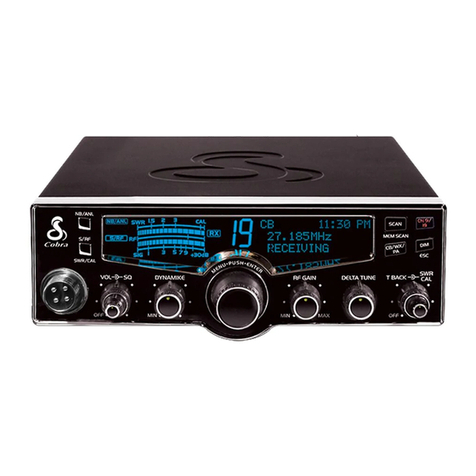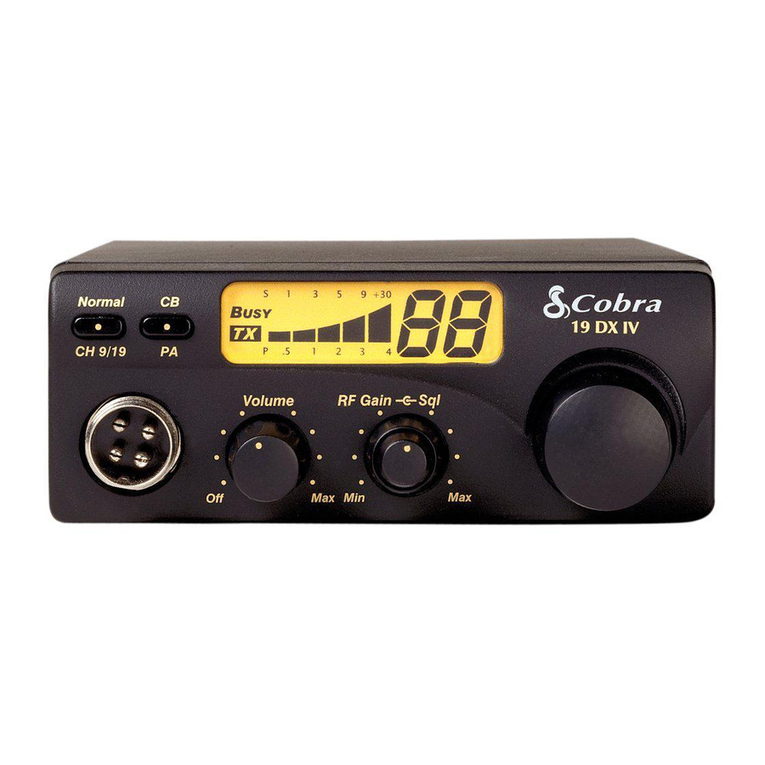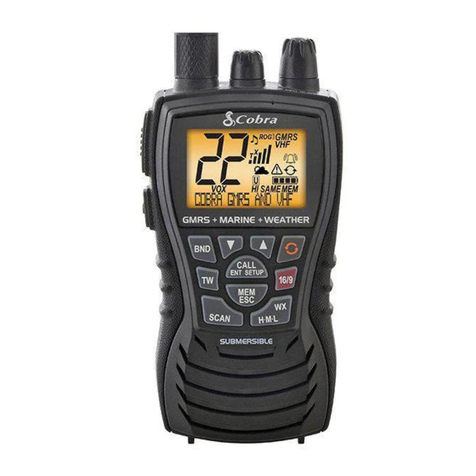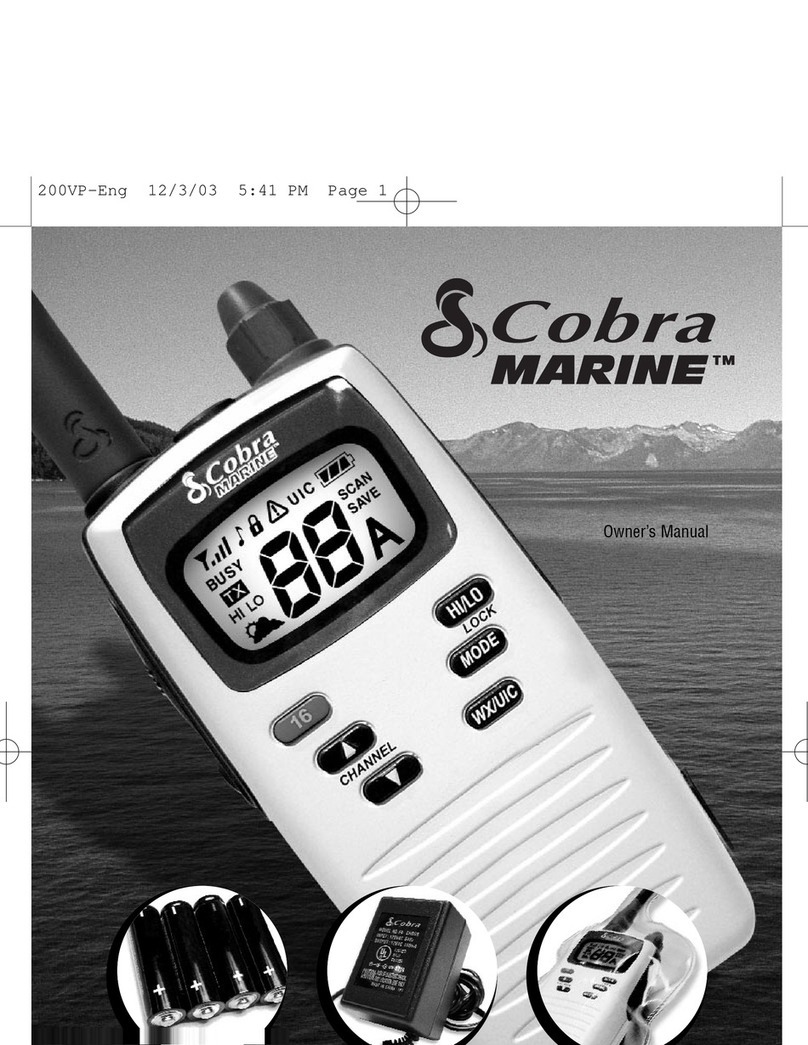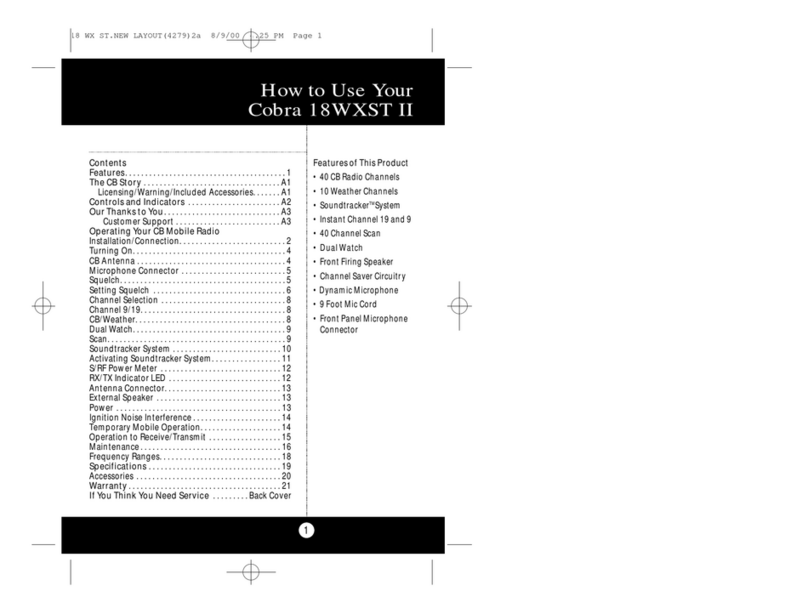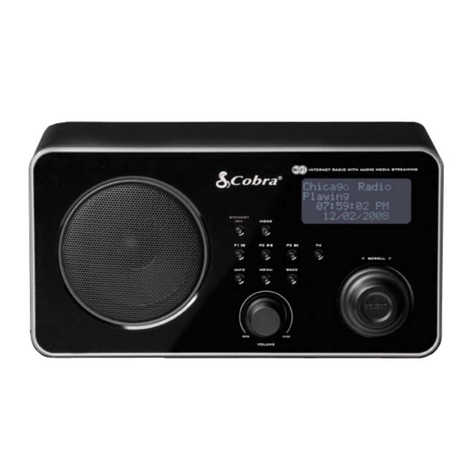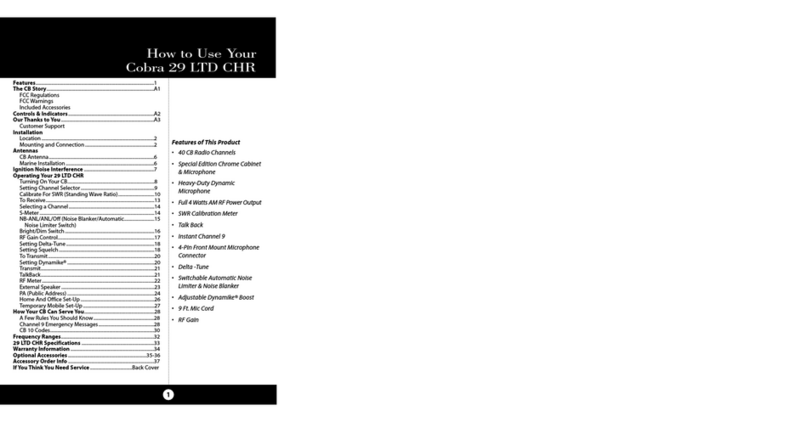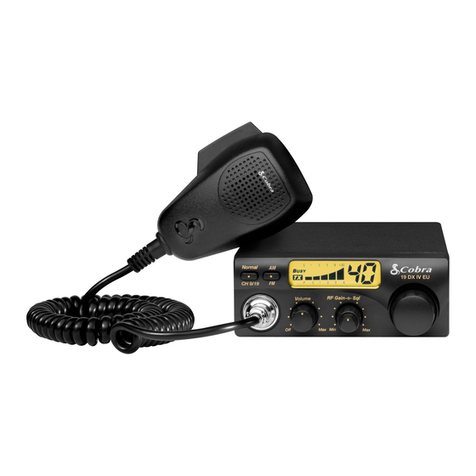
MEMSAMEVOX HI
ROG
VHF
GMRS
T
RX
U
A3 English
Intro Operation Customer
Assistance
Warranty
Notice
Main Icons
Secondary Icons
Caution Warning
Installation Customer
Assistance
Introduction
Backlit LCD (Liquid Crystal Display) Screen •
UIC Active Channel
Map Icons
Button Lock Icon
Low/Medium/High
Power Icons
Power Settings
Selectable power settings produce
1, 3 or 6 Watts (marine) and 1, 2 or 3 Watts
(GMRS) of output power for
near or distant calling.
USA/International/Canada Channels
Allows operation on any of the three (3)
different channel maps established for
these areas.
All NOAA Weather Channels
Instant access to all National Weather
Channels, 24 hours a day.
Submersible to JIS7/IPX7 Standards
Waterproof to 3.3 ft (1 m) of water
for 30 minutes.
Button/Key Lock
Prevents accidental setting changes
when button lock is set.
Channel Scan/Memory Scan
Use to scan through unlimited
channels or memory locations
to find conversations in progress.
Matrix Display
The display at the bottom of the LCD screen
displays text letting the user know the
current radio mode, function or operation.
AA Battery Compatible
Good for emergency backup.
Includes AA battery tray (P/N CM 110-024).
Instant Channel 16/9
Provides instant access to priority Channel
16 and calling Channel 9.
Tri-Watch
Use to monitor three (3) channels
at once — Channel 16 and two (2)
programmable channels.
Floating
This radio will float if dropped overboard.
Must use included battery to float.
120V/12V Charger Included
Use to charge battery pack, at home,
in a car or in a boat.
Product Features •
Backlit LCD Screen
and Product Features Product Features
Intro Operation Customer
Assistance
Warranty
Notice
Main Icons
Secondary Icons
Caution Warning
Installation Customer
Assistance
Introduction
Bands
Dual VHF (Very High Frequency) and GMRS
(General Mobile Radio Service) bands allow
you to use different frequencies while using
this radio either on land or water. VHF can
be used for two-way vessel-to-vessel and
vessel-to-shore station communications.
GMRS can be used for small group
communication such as in a general
residential area or during recreational
group outings. Note: GMRS radio usage
requires an FCC License.
Rewind-Say-Again®
Replays missed VHF and GMRS calls.
Locking Desktop Charger
Holds the radio or battery in place while
charging. Vertical or horizontal mounting.
Call Tones (Selectable)
10 selectable call tones
Emergency Weather Alert with SAME
Can alert you with an audible tone and visual
alarm if threatening weather is nearby. The
SAME alerts provide you with additional
alerts for specific local areas.
Speaker/Mic Jack
Allows connecting optional Cobra
Lapel Speaker/Mic and other Cobra
accessories.
Unlimited Memory Channels
Allows programming of unlimited
VHF and GMRS memory channels.
15 GMRS Channels
Seven (7) shared with GMRS/FRS and
eight (8) GMRS only.
121 Privacy Codes
Allows semi-secure communications,
creating up to 1815 privacy combinations
(38 CTCSS codes-83 DCS codes).
Signal Strength Meter
Shows the strength of incoming or outgoing
signals.
Noise Canceling Microphone
Reduces effect of environmental
noise when speaking.
Illuminated Buttons
Allows high visibility of all function buttons.
Roger Beep Tone (Selectable)
Confirmation tone indicates the completion
of the user’s transmission
and signals to others it is clear to talk.
On or Off selectable.
BURP
The Cobra exclusive BURP feature expels
water from the speaker grill if the unit is
dropped in the water or is subjected to
extreme rain and weather.
Product Features (continued) •
A4 English
Intro Operation Customer
Assistance
Warranty
Notice
Main Icons
Secondary Icons
Caution Warning
Installation Customer
Assistance
Introduction Notes
Call Alert Icon
Weather Alert Icon
Frequency Band Icons
Roger Beep Icon
Battery Power Icon
Memory Icon
Matrix Display
Weather Icon
Active Channel Icon
Transmit and
Receive Icons
Key Tone Icon
Signal Level
Icon
Left blank intentionally for your notes
Rewind-Say-Again®Icon
VOX Icon
S.A.M.E. Icon
